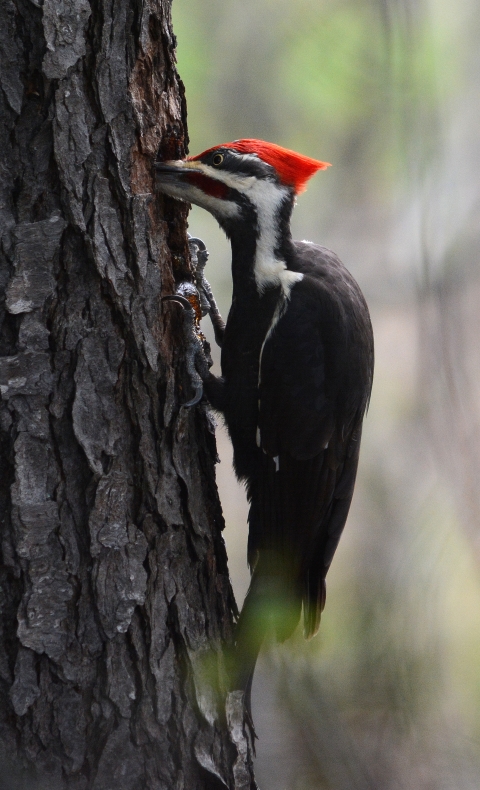It’s no surprise that forests are full of life, but did you know that even dead trees are alive? We at the U.S. Fish and Wildlife Service have been studying the importance of dead trees as biological legacies that support a wide variety of life every day. Take a moment to learn about how dead trees are the engine of forest ecology and fuel new life.
Making room for new growth
Within forested ecosystems, one dying tree can translate to new life and new opportunities for a host of living things. For a forest plant, for instance, a dying tree releases all sorts of resources and makes room for new and different plants to grow. More light may now filter down through the canopy, which spurs germination and other processes. As the tree decomposes, the nutrients once stored within the tree are released and made available to plants that were once its competitors.
Supporting wildlife
For wildlife, these standing dead trees, commonly known as snags, now present a unique structure and potential food source. Ants, beetles and other wood-boring invertebrates that excavate and live within these snags become meals for many birds. Pileated woodpeckers, and other cavity nesters, view snags not only as a food source, but also as a place to take up residence and nest.
The value of a snag only grows more extensive as it ages. Once cavity nesters like woodpeckers are finished nesting in snags, the cavities can be used by all sorts other wildlife including flying squirrels, fishers, bats and birds that use nest cavities created by others. While the positive attributes of standing dead trees might seem like a happy accident for wildlife, some birds like eastern bluebirds and wood ducks depend on them and evolved with dead and dying trees on the landscape.
Ecological benefits
“At the time a tree dies, it has only partially fulfilled its potential ecological function,” writes Dr. Jerry Franklin, a leading forest ecologist from the University of Washington.
Major factors are associated with the global biodiversity crisis including land use change, human population growth and other types of ecosystem simplification. To address this issue, scientists like Dr. Franklin have devoted their careers to understanding forest dynamics, including patterns of tree death and decay. Biological legacies, like snags, are remnants of forests left behind after major disturbance events. Dr. Franklin’s work that followed the 1980 eruption of Mount Saint Helens promoted the understanding that there are patterns that form after major events and that they can teach us how to better manage forests.
As he notes, there are many factors and interactions that lead up to the point when a tree is considered “dead.” Understanding these complex interactions is just one of the challenges land managers face while balancing ecosystem function with other biological objectives, like managing for specific species. In some forest ecosystems, biodiversity and biomass issues may not be solved by nest boxes that aim to mimic the natural functions of snags.
Studying the importance of snags
While scientists and land managers know the importance of snags, there is still a lot to be understood about managing for dead material among different ecosystems. The ecological significance of these standing dead trees can vary depending on the species of tree and local environmental conditions that helped the tree grow and live over time. The factors at play in the death of the tree also teach us lessons. Insects, disease, wind and fire can each influence tree death, decomposition and wildlife uses in different ways.
Public lands provide the perfect living laboratory for biologists and researchers to build on what we know about how snags form, decay under different conditions and how snags are used by insects, woodpeckers and other wildlife. From past research, we’ve learned that snags of different tree species decay at different rates, and that the rate of decay varies based on the cause of death. With this information as a backdrop, we continue to explore what this means for wildlife.





